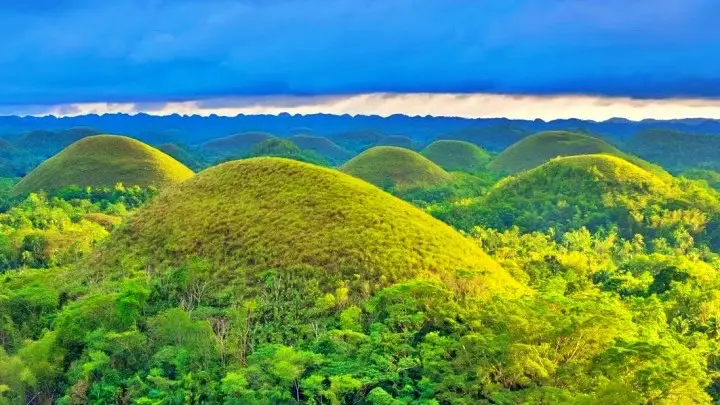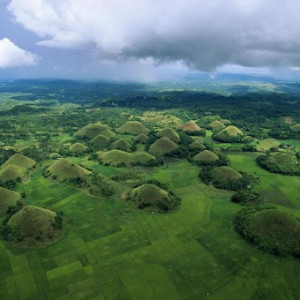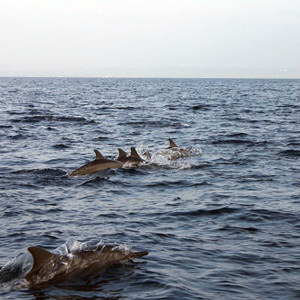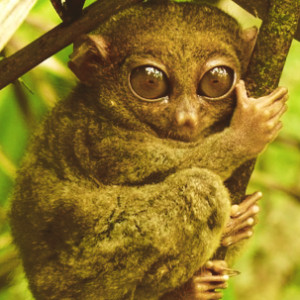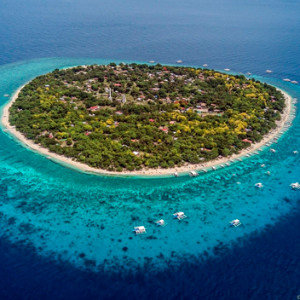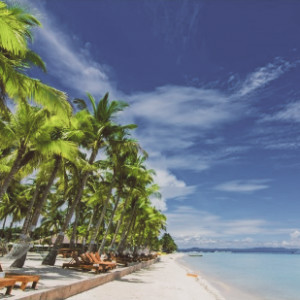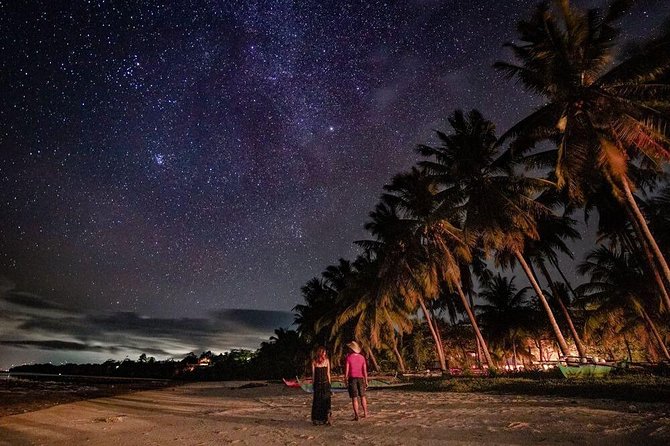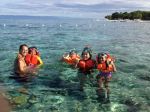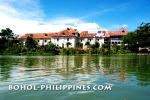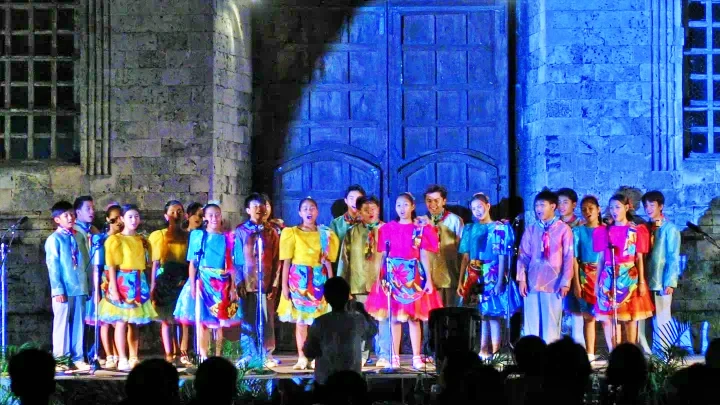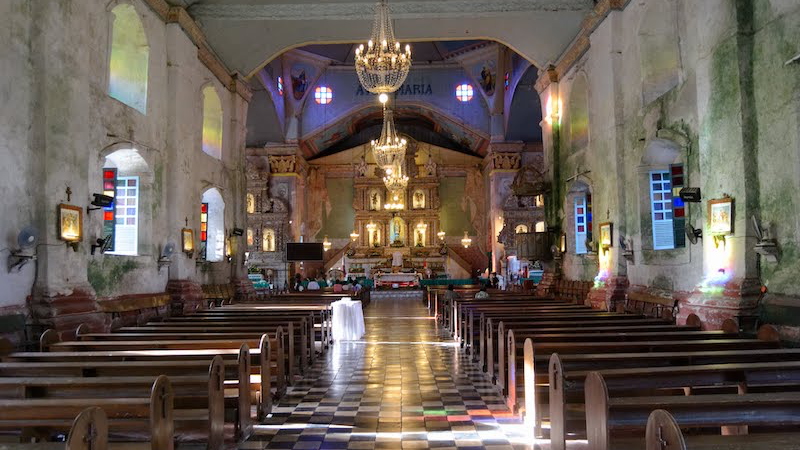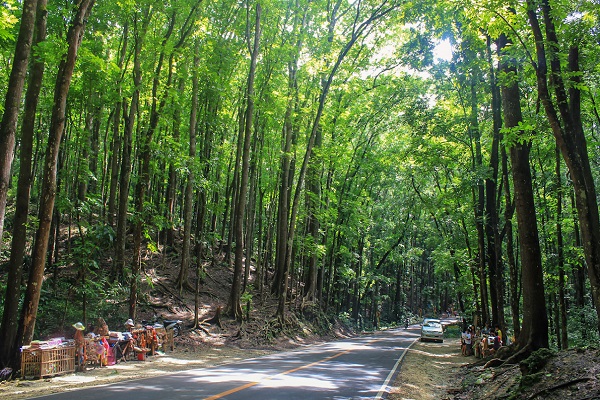- Bohol
- Bohol Travel
- Books on the Philippines
Exploring the Archipelago: Captivating Books on the Philippines
Secure your Cebu Bohol ferry tickets today to start your unforgettable journey!
Unlock the vibrant tapestry of the Philippines with our curated collection of captivating books! Immerse yourself in the rich cultural heritage, explore the breathtaking landscapes, and delve into the fascinating history of this enchanting archipelago. From compelling narratives to stunning photography, our selection of Philippine books offers a gateway to a world of discovery. Whether you're a travel enthusiast seeking to uncover hidden gems, a history buff intrigued by the country's past, or simply looking for literary gems that transport you to this captivating nation, our books will take you on an unforgettable journey. Join us as we celebrate the beauty, diversity, and captivating stories that the Philippines has to offer. Dive into our collection and embark on a literary adventure that will leave you longing to explore this remarkable country firsthand.
Recommended Bohol Philippines Tours
[ Bohol Sight Seeing Day Trips - Check Out Availability ]
[ Full Day Cruise and Sailing Tours - Check out Availability ]
[ Full Day Adventure Tours - Check out Availability ]
Discover more of Bohol's natural wonders through our recommended tours. Click on the links below to embark on unforgettable adventures:
Ready to explore the beautiful islands of Cebu and Bohol? Secure your ferry tickets today through 12go and start your unforgettable journey!
Books about History of the Philippines
History of the Philippines: From Indios Bravos to Filipinos by Luis Francia (Jun 10, 2010)
Philippines has emerged from history as a unique multi-cultural and multi-racial nation.
During early times, the country had struggled with its rich, troubled, and multi-layered past. History of the Philippines recasts various Philippine narratives that moves from a pre-Hispanic Philippines in the 16th century through the Spanish American to the subsequent American occupation and its tumultuous relationship with the United States up to its independence in 1946 and to its subsequent years of Islamic insurgency. These narratives – both familiar and unfamiliar – had an eye of the layers of colonial and post-colonial history creating this diverse and fascinating population.
Many are curios about this Southeast Asian archipelago; however, they only know very little of its history. Luis H. Francia creates an illuminating portrait that provides the reader valuable insights into the heart and soul of the modern Filipino, laying bare the muli-cultural and multi-racial society of modern times.
In Our Image: America's Empire in the Philippines by Stanley Karnow (Mar 3, 1990)
Philippines had been one of the former colonies of the U.S in the years following of Spain’s rule in the country. This part of history is often described as 300 years in the convent which refers to the Spanish regime and 50 years in Hollywood referring to the American rule.
This book, In Our Image, is more on the America’s history with its former colony, the Philippines. This is also where Karnow narrates the careers of several individuals who influenced the Philippines.
Karnow claims that U.S. imperialism in the Philippines has been “uniquely benign” if compared to European colonialism. However, in this colorful, briskly readable history, the evidence somewhat weakens this perception. An example of this is the U.S.-Philippine war on 1898 which dehumanized U.S. troops having looted and annihilated villages.
After the Filipinos are freed from the hands of the Spanish government, with America’s new ownership of the country, the Filipinos were drawn into a second conflict. Thousands of lives were costs by the insurrectionist movement against America that brought about a bloody and savage war. There was also the attempt to subdue the Moros which are known as some of the toughest and most fearless warriors. Many American thought that they would be only fighting Spanish regulars and then to be sent home; however, they were wrong. Many soldiers spent years fighting in jungles and swamps against a clever and determined foe.
Though well known to professional historians, the US’s fight against the Filipino insurrectionists remains a blank spot to most Americans. This period of both the Philippine and American history is an excellent telling of a period that both Americans and Filipinos know little or nothing about. Stuart Miller's book is an excellent study in the political turmoil and subterfuges involved in the transition of America into an imperialist power.
A War of Frontier and Empire: The Philippine-American War, 1899-1902 by David Silbey (Mar 4, 2008)
Philippines had been struggling for many years to liberate itself from the Spanish control. This book is a well-researched examination of a struggle that, ultimately, helped forge a new nation out of disparate elements.
Basing from both Philippine and American sources, David Silbey convincingly establishes that the Philippine-American War included three separate conflicts. The first was a Filipino-American war against Spain, which the Filipinos were on the point of winning by themselves. In the second, the U.S. decisively outfought the embryonic Philippine Republic. Silbey establishes the U.S. decision to annex the Philippines as a transition from a frontier to a global ethos, incorporating spiritual, modernist and Darwinian elements, aided by the American army. However, that lost war defined Filipino national identity—far more so than the third war, which was a guerrilla conflict between the U.S. armed forces and an increasingly locally focused insurgency. Silbey's chronicle of that conflict is fair and frequently surprising. Though the American victory involved episodes of brutality, the author demonstrates that it was sufficiently quick, decisive and humane, and the former opponents cooperated so amicably, that Americans were arguably deceived regarding the general prospects of reconciling enemies. As America contributed to Philippine nationalism by establishing economic, social and linguistic connections, he shows that Filipino defeat came to look like victory.
"The Philippines Reader" illuminates the history of the continuing struggle of the Filipino people for true independence and social justice from foreign domination.
Daniel Schirmer and Stephen Shalom have put together a single volume readings and documents providing essential background-- from the turn-of-the-century U.S. war of conquest to the new administration of Corazon Aquino.
Documentary selections in this "Philippines Reader" come from such diverse sources as the CIA and the State Department; U.S. Presidents McKinley and Reagan; Philippine leaders Aguinaldo and Aquino; Philippine nationalist and left organizations such as the Anti-Base Coalition, Bayan, Kaakbay, and the New People's Army; and U.S. opponents of foreign intervention.
The editors introduce, explain, and tie together over eighty readings making this the most complete introduction available on events in the Philippines.
Philippines' 2 Millennium History by Luzano Pancho Canlas (Jan 2000)
Philippines had been a cultural middleman between East and West for thousands of years already. This fascinating island-nation has a very colorful history that one should know. Luzano Canlas, the book’s author, is a scholar of high regard and has several excellent works on a variety of topics. In this book, he has written the definitive work on these 7,000 isles and its 75 million people, from its legendary link to Noah to last year’s mineral resource output.
According to David Brody, visual media played a major role in shaping American’s perceptions of the Philippines. In 1899 an American could open a newspaper and find outrageous images, such as an American soldier being injected with leprosy by Filipino insurgents. Brody argues in this book that these kinds of hyperbolic accounts were just one element of the visual and material culture.
Brody offers a distinctive perspective on American imperialism from sources including photographs, tattoos, the decorative arts, the popular press, maps, parades, and material from world’s fairs and urban planners. Exploring the period leading up to the Spanish-American War, as well as beyond it, Brody argues that the way Americans visualized the Orient greatly influenced the fantasies of colonial domestication that would play out in the Philippines. Visualizing American Empire explores the ways visual imagery and design shaped the political and cultural landscape. Throughout, Brody insightfully examines visual culture’s integral role in the machinery that runs the colonial engine.
McCoy shows how the Philippines served as a laboratory subject for experiments in policing, intelligence, surveillance, and ‘black-operations’ that were then repatriated to shape the American domestic surveillance state from World War I forward. This remarkable study provides a meticulous analysis of the novel colonial system developed by the U.S. in the Philippines after the murderous conquest, with startling implications for the shape of the modern world.
U.S. Army occupied Manila at the dawn of the twentieth and then plunged into a decade-long pacification campaign with striking parallels to today’s war in Iraq. U.S. colonial regime has the most modern police and intelligence units with its cutting-edge technology from America’s first information revolution. In McCoy’s book, he shows how it slowly crushed the Filipino revolutionary movement with a lethal mix of firepower, surveillance, and incriminating information.
U.S occupation was able to develop a major innovation in imperial practice relying everything on the information revolution of the day in establishing intense surveillance and control of the occupied population. Violence is also applied when needed and privileges to obedient elites. While also contributing substantially to the modes of suppression of independence and social change elsewhere and returning home to lay the foundations for a national security and surveillance state, this protracted social experiment in the use of police as an instrument of state power left a devastating legacy for the Philippines.
The United States having announced its arrival as a world power during the Spanish-Cuban-American War in 1899, launch a brutal war of imperial conquest against the Philippine Republic. Kramer argues that Philippine-American colonial history was characterized by struggles over sovereignty and recognition.
Kramer argues that Philippine-American colonial history was characterized by struggles over sovereignty and recognition. In this transnational study, Kramer reveals how racial politics served U.S. empire and how empire-building in turn transformed ideas of race and nation in both the United States and the Philippines. Kramer provides an innovative account of the global transformations of race and the centrality of empire to twentieth-century U.S. and Philippine histories.
American-Philippine Army was destroyed on Bataan and Corregidor fifty years ago. The land campaign lasted for about five desperate months; however, the air battle took only three short day. The Americans with their obsolete aircraft, lack of anti-aircraft guns and radar, together with their inadequately trained pilots was completely wiped out by December 10th. Many pursuit groups were destroyed on the ground on the second day of the war; however, there are also few who were able to fly until the fall of Bataan yet they only accomplished little.
Doomed at the Start offers an admirably-detailed history of the five fighter squadrons deployed in the Philippine Islands on Dec. 7, 1941. With most of their planes destroyed or damaged in the inital Japanese attacks, the survivors fought on against overwhelming odds. This book describes in detain the everyday occurrence of heroism in the worst of circumstances. The situation faced by the pursuit pilots, their equipment, and ground crews point out dramatically how the U.S. was really unprepared for World War II. Most of these participants were only hoping to survive the rest of the war in a Japanese prison camp. The contrast between the situation in the Philippines and P-40 tactics in China are analyzed at the end.
Bataan, a place in the Philippines, is famous for the notorious “death march” that happened during World War II. For three years, Japan occupied the archipelago. This fighting that waged across the Philippines during World War II is considered one of the most vicious in the annals of war. During the reign of the Japanese in the country, more or less 130,000 American and Filipinos were killed and imprisoned.
Both Filipino civilians and soldiers of the Americans and Filipinos suffered during the Philippines’ fall to the Japanese in 1941-1942. War’s raw brutality pours over the pages of Astor’s book. Gerald Astor gives voice to the soldiers who participated in this gruesome period of world military history.
Philippines had been through a rough history making it to what it is now today. This book of Rafael illuminates the twentieth century Philippine history with great sophistication and subtlety. Rafael examines the period from the onset of the U.S. colonialism in 1898 to the emergence of a Filipino diaspora in the 1990s.
White Love and Other Events in Filipino History is a book that treats colonialism, nationalism, and constructions of gender and race in ways that many non-Philippine specialists are certain to find interesting and fruitful. It offers a view of nationalism as an unstable production under different circumstances. It also shows the effects of the concept of nationalism among the Filipinos. With a focus on the contradictions and ironies that suffuse Filipino history, Rafael delineates the multiple ways that colonialism has both inhabited and enabled the nationalist discourse of the present.
A critique of both U.S. imperialism and Filipino nationalism, White Love and Other Events in Filipino History creates a sense of epistemological vertigo in the face of former attempts to comprehend and master Filipino identity.
The Battle of Bataan: A Complete History by Donald J. Young (May 13, 2009)
Bataan, Philippines had been very famous for its “death march” that occurred sometime during the World War II. It represents the single largest surrender in American and Filipino military history. This book by Donald J. Young brings together all facets of the history of the battle by also looking at the events which let up to the fall of Bataan.
This book begins with an overview of the Philippine, American, and Japanese forces which fought on Bataan. It is then followed by chapters looking at the military build-up, the Japanese invasion, the Battle for the Points, the Battle of the Pockets finally leading to the notorious surrender and “death march”. Modern photographs and several maps can also be found in the book.
Philippines had been a major battleground in World War II and this role should not be forgotten. An action-packed true story of the war in the Pacific, Behind Japanese Lines: An American Guerilla in the Philippines, is the story of Ray Hunt who is an American soldier able to escaped the Bataan Death March and was able to organized a troop of American and Filipino guerillas.
The story of American servicemen fighting as guerillas during the Japanese occupation of the Philippines is an amazing one. Hunt tells his own vivid and harrowing tale of his ordeal as a guerilla behind Japanese lines, an ordeal he did not expect to survive. There is the struggle to survive and harass the Japanese and the lingering fear among his troops that they would be court-martialed for desertion if the Americans won the war since they did not follow the order to surrender to the Japanese when their units in the Philippines surrendered to the Japanese.
Importantly, Mr. Hunt gives much regard to the Filipino people, who suffered so much during the war. With their help and sacrifice, he was able to stay alive and fight to help liberate the Philippines. Very few other people of any nation gave so much in fighting for freedom during the war.
The book is an exceptionally well written, eye-witness narrative that is a much appreciated and welcome contribution to the growing library of World War II literature with its detailed analysis of the history of the Philippines and its complex relationship with the United States.
White beaches, reef-ringed islands, and lush forests – these are what makes Philippines famous BEFORE. However, today the Philippines is already known as an example of the deep costs of ecological decline. Small and large users alike destroyed the forests by cutting trees without even replacing them thus causing deadly flash floods. There are also which shattered the coral reefs and over-fished the oceans causing the collapse of vital fisheries.
Such consequences have reverberated throughout the country causing the weakening of the rural economy. In effect to this, millions migrated to the cities thus urban health problems deepened and the infrastructures are overwhelmed. In order to curtail the environmental damage and be able to manage the remaining resources, pioneering efforts have been launched by both governmental and non-governmental associations.
This book by Barbara Goldoftas, The Green Tiger, narrates the story of environmental destruction in the Philippines, the greed and corruption behind this devastation, the social, economic, and human costs. The conflicting forces of politics, economics, religion, and environmentalism are clearly depicted in her book.
The Green Tiger offers an unusually close look at the consequences of ecological decline and determined efforts to reverse them. It argues that, rather than destroying a natural resource base, development should integrate conservation and economic growth. It gives a realistic, but optimistic vision of the long process of "nation-building" that is the backdrop of environmental work in a developing country and a new democracy.
The Los Baños Prison Camp Raid has been one of the World War II’s most masterfully executed raids from its planning to its execution.
Los Baños Internment Camp stood on the southwest shore of Laguna de Bay near a village of the same name. Within this camp were over 2,000 starving men, women, and children which were guarded by 250 Japanese soldiers and surrounded by several thousands more in the nearby countryside.
It was feared that the prisoners would be executed or moved beyond the reach of the liberating armies as the desperate battle for Manila raged. This stunning triumph of courage and perfect timing in the face of overwhelming odds is rendered with enthralling detail by only 130 Paratroopers.
This awe inspiring story about the 130 Paratroopers presents a genuine view from its planning to its execution with riveting details that could truly capture the reader’s interest. This in-depth analysis is backed by rare photographs and stunning artwork by Johnny Shumate. This book is truly a nail-biter.
A young reserve lieutenant in the U.S. Army, Lapham, evaded capture in the Philippines in the spring of 1942. He organized a guerilla regiment in the Central Plains of the northern island of Luzon.
Lapham is a well-educated, literate writer who does not focus on his own exploits or inflate his accomplishments. He tried to give a complete picture of anti-Japanese operations in Luzon, carefully describing the anti-Japanese, pro-Japanese, civilians, Communist Hucks, patriots, traitors, and those who sat on the fence and just waited. These entire make his account unique compared to those other writers making it an extremely valuable work that belongs in all World War II collections.
Republic of the Philippines is located in Southeast Asia and is comprised of over 7,000 islands. Land bridges were existed before allowing the first known inhabitants to migrate and settle down on these tropical islands 30,000 years ago. But now, these land bridges no longer existed today.
Philippines had undergone drastic changes since then. This has been due to large numbers of settlers and colonizers from abroad. The country had been under the Spanish for hundreds of years subsequently followed by the United States. The influence of these two colonizers remains a large part of Filipino culture today especially the influence of the Spanish reign. It was on the year 1935 that the Philippines embarked on the path to independence.
Today, the Republic of the Philippines’ developing economy sparked international interest. The country has been marked as having one of the most promising potentials for economic growth in the world. This book, The History of the Philippines, offers a comprehensive account of the country and its roller coaster struggle to discover a national identity. This volume perfect for student and general readers alike.
Philippines, a country of rich history, had undergone rough period of struggle and oppression from the Spanish conquest and colonization subsequently followed by the U.S. imperialism. A penetrating analysis of the productive relations and class structure in the Philippines and how these have shaped – and been shaped by – the role of the Filipino people in the making of their own history is presented by Renato Constantino is this book. Moreover, he challenges the dominant views of Spanish and U.S historians by exposing the myths and prejudices that propagated in their work. By this, he was able to make a major breakthrough toward intellectual decolonization, thus making his book an indispensable key to the history of conquest and resistance in the Philippines.
The extent and variety of the Philippine-American military experience from the conquest of the islands by the United States in 1902 to the defeat of Philippine and American forces by the Japanese in 1942 is being highlighted in this annotated bibliography.
Military obligations rested lightly upon the Filipino people for much of the period that America occupied the Philippines;however, Filipinos could enlist in the United States Army and Navy, attend the service academies at West Point and Annapolis, or join military organizations restricted to duty in the islands such as the Philippine Scouts, Philippine Constabulary, Philippine National Guard, and the navy's insular force. In the 1930s, the Philippine government established its own armed forces. Throughout much of this time, the U.S. army also kept a substantial portion of its troop strength in the Philippines.
The bibliography includes memoirs and biographies of Filipino and American officers and enlisted men (from MacArthur to Ferdinand Marcos), unit histories, army post and navy base histories, medals and insignia books, and the most extensive list of prisoner-of-war memoirs yet published. Annotations address controversies such as the widely disparate estimates of American deaths on the Bataan Death March and include previously unpublished information, such as casualty figures for American and Philippine forces in 1941–1942.
Books about Philippine Cuisine
Filipino Cuisine: Recipes from the Islands by Gerry G. Gelle (Paperback - Jun 30, 2008)
Asian, Spanish, Muslim, Portuguese, Mexican, and of course, Filipino – all the cultural influences that make up this country are presented in this cuisine. All the regional styles of cooking from the island nation of the Philippines is provided a comprehensive presentation.
Filipino Cuisine, by Gerry Gelle, reveals a cuisine blending history and geography. In his book, how Filipino cuisine can be subdivided into regional specialties are featured and each has its own historical influences. Dishes are grouped by genre. It compares and contrasts dishes with similar ones from other parts of the Philippines.
By reading the book, one can really say that Filipino cuisine is really diverse since each major region of the archipelago has its own unique taste that warrants its own recipe book.
Recipes seem less exotic and unapproachable since accurate English translations are used. Clear instructions from the simplest to the more intricate dishes are provided making it easy to understand even for those new in cooking.
Fine Filipino Food by Karen Hulene Bartell (Kindle Edition - Jun 30, 2003) - Kindle eBook
Fine Filipino Food by Karen Hulene Bartell is a testament to a rich mix of cultures. Nine cooking methods are used in this book. Stir-frying and deep-frying cooking techniques was introduced by the Chinese traders, including noodles and soy products. There are also grilling on skewers, sautéing in coconut milk, marinating in vinegar and spices, broiling over live charcoal, wrapping in banana leaves, and steaming.
It was the Malaysian spice traders who brought seasonings from the Spice Islands and introduces that delectable appetizer, satay. Adobo (a pickling sauce made from olive oil, vinegar, garlic, oregano, paprika, thyme, bay leaf, and salt), which is a Spanish cuisine, was from the Spanish colonization. American influence left the legacies of speed and convenience.
Created from recipes collected during the author’s travels to this country, this book features 205 recipes, a glossary of ingredients, a guide to ingredient substitutions, and an extensive resource guide, which allow all home cooks to perfectly recreate these delectable dishes.
KAREN HULENE BARTELL, the author of the book, and her husband lived in Taiwan for five years, where she first learned to prepare the incomparable food of the Philippines. Spending time in Boracay, Philippines, reinforced her fondness for the country’s cuisine. She is the author of Best of Korean Cooking, Best of Taiwanese Cooking, and Best of Polish Cooking, all published by Hippocrene Books. A senior technical writer, she lives in Texas, with her husband.
Memories of Philippine Kitchens by Amy Besa and Romy Dorotan (Hardcover - Nov 1, 2006)
The essence of Filipino food has always remained somewhat secluded in the family kitchens of Filipino homes, passed down through the generations, blending native traditions with those of Chinese, Spanish, and American cuisines.
The book, Memories of Philippine Kitchens, by Amy Besa and Romy Dorotan is the result of years of research and tracing of the traditions of the food of the Philippines. It presents a fascinating look at Filipino cuisine and culture. The authors of the book documented dishes and culinary techniques that are rapidly disappearing and in some cases unknown to Filipinos whether in the Philippines or abroad. These dishes may include lumpia, pancit, kinilaw, adobo and lechon.
The role of food in Filipino society, both old and new, is also vividly documented aside from the more than 100 unique recipes culled from private Filipino kitchens and their own acclaimed menu. The book is filled with hundreds of sumptuous photographs by the esteemed Filipino photographer Neal Oshima and colorful stories of food memories from the authors and other notable local cooks.
The authors, Amy Besa and Romy Dorotan, are both Philippine natives who own and operate Cendrillon, a popular restaurant they opened in New York in 1995, where Dorotan is the highly acclaimed chef. Neal Oshima, the book’s photographer, is the principal photographer of more than two dozen books on Philippine and Asian culture, seven of which have won Philippine National Book Awards. He lives in the Philippines.
The book is truly a joy to peruse both in and out of the kitchen.
One of the most vibrant and intriguing cuisines in Asia is the Filipino Food being influenced for over 300 years of Chinese, Hispanic, and American culinary techniques. The blend of these different cultures makes Filipino cuisine an extremely different from other cuisines.
These popular Filipino recipes range from national dishes such as adobo, to the spicy dishes of the Bicol region, and many more – a tantalizing concoction of textures, flavors and colors.
What distinguish this book from other ethnic cookbooks are its genuine native artwork and its detailed description of life in the Philippines. One can really know just what to expect when preparing these exotic delicacies since all of the dishes and ingredients are vividly photographed.
Reynaldo G. Alejandro, the author, works as a lecturer and professional cook aside from managing his own catering company. He lives in New York City.
Luca Invernizzi Tettoni, the photographer of the book, photographs a wide range of subjects including food, architecture, and gardens.
A taste of the Philippines, a book written with the combined knowledge of Ghillie Basan and Vilma Laus, is a sensational collection of both traditional and exotic recipes that captures the essence of cuisine. The book offers a concise introduction about the life in the Philippines, information about the region, the geography, festivals, history and culinary traditions.
One of the authors, Ghillie Basan, used her knowledge of Asian and Middle Eastern culinary cultures to write several highly acclaimed cookbooks, including Classic Turkish Cookery, which was shortlisted for the Glenfiddich Book of the Year and the Guild of Food Writers’ Cookery Book of the Year awards. The other author, Vilma Laus, was born in the Philippines and trained at the Cordon Bleu Cookery School. She had been a chef for many years specializing in Filipino banquets. Vilma now lives in Scotland and runs a catering business.

Banana Leaves: Filipino Cooking and Much More by N.T. Alcuaz (Kindle Edition - Jun 30, 2006) - Kindle eBook
Banana Leaves: Filipino Cooking and Much More by N.T. Alcuaz is a book of family, love, and memories. It offers not only traditional cooking techniques. Its 220 and more tasty recipes from the Philippines and other countries is written from the heart and from the experiences of growing up in the Philippines during a time of war and consequently raising a family in the United States.
The book neither offers chef-style cooking nor elegant cuisine. It is a compilation of a family’s cooking – the cooking that they had shared with each other, to their family, and to their friends. Each chapter begins with one of the author’s dearest memories of her family, friends and the Philippines – each stirred by sights, smells and flavors of that chapter’s recipes.
Most of the dishes offered in this book are Filipino with a few accompanying recipes of Chinese, Spanish and Italian origin. Banana Leaves features recipes of different kinds of dishes such as pancit (noodles), lumpia (spring rolls), kakanin (Filipino snacks, and much more. It also offers recipes for more common dishes like chicken, pork, beef, seafood, cookies, cakes, and even jams and marmalades – which the author still makes for her family.
This comprehensive new books offers a range of traditional and lesser-known dishes from the two countries. It also discusses their origins with a fascinating introduction to the history, landscapes and traditions of both countries.

Perfect! The book provides a ton of great recipes.
Philippine food traditions are based on their particular variant on oriental cooking and then modified by years of influence from incoming cultures. The Filipino-American Kitchen includes a brief culinary history of the Philippines and a list of Filipino ingredients used in the recipes. It contains over 100 traditional and modern adaptations of Filipino recipes perfect for Americans with little or no experience with Filipino cuisine and for Filipino-Americans interested in learning new adaptations of traditional dishes.
There are 10 chapters of recipes which are organized by course, with the main courses organized by food type making it an invaluable resource for anyone interested in Filipino cooking.
The book also provides a guide to navigating Asian grocery stores. There is also a resource section for ordering ingredients online or directly from stores.
Jennifer Aranas was the chef and owner of the nationally acclaimed Rambutan Restaurant, which is Chicago’s first fine-dining Filipino eatery. She sold the restaurant in 2002 to focus on her food writing and teaching cooking classes.
Check out for Bohol Books
Back to Top: Philippine Books
Back to Bohol
Ready to explore the beautiful islands of Cebu and Bohol? Secure your ferry tickets today through 12go and start your unforgettable journey!
recommended hotel booking
Book your stay in Bohol's breathtaking surroundings through Agoda and experience the ultimate relaxation
Top 25 Sights and Attractions in Bohol
- Chocolate Hills
- Tarsier Conservation Sanctuary
- Panglao Island
- Loboc River Cruise
- Hinagdanan Cave
- Balicasag Island
- Alona Beach
- Bilar Man-made Forest
- Blood Compact Shrine
- Baclayon Church
- Bohol Bee Farm
- Anda Beach
- Sipatan Twin Hanging Bridge Loboc
- Danao Adventure Park
- Sagbayan Peak
- Butterfly Conservation Center
- Clarin Ancestral House
- Dimiao Twin Falls
- Mag-Aso Falls
- Anda White Beach
- Lamanok Island
- Rajah Sikatuna Protected Landscape
- Dauis Church
- Can-umantad Falls
- Punta Cruz Watchtower
Top 20 Destinations of Bohol
- Tagbilaran City
- Panglao Town
- Talibon Town
- Anda Town
- Loboc Town
- Dauis Town
- Ubay Town
- Tubigon Town
- Loon Town
- Jagna Town
- Alicia Town
- Carmen Town
- Getafe
- Danao Town
- Bilar
- Alburquerque
- Sierra Bullones
- Sagbayan Town
- Baclayon Town
- Antequera
Ready to explore the beautiful islands of Cebu and Bohol? Secure your ferry tickets today through 12go and start your unforgettable journey!
All Rights Reserved ©2023. Bohol Philippines Travel Guide
Address: Talibon, Bohol, Philippines
